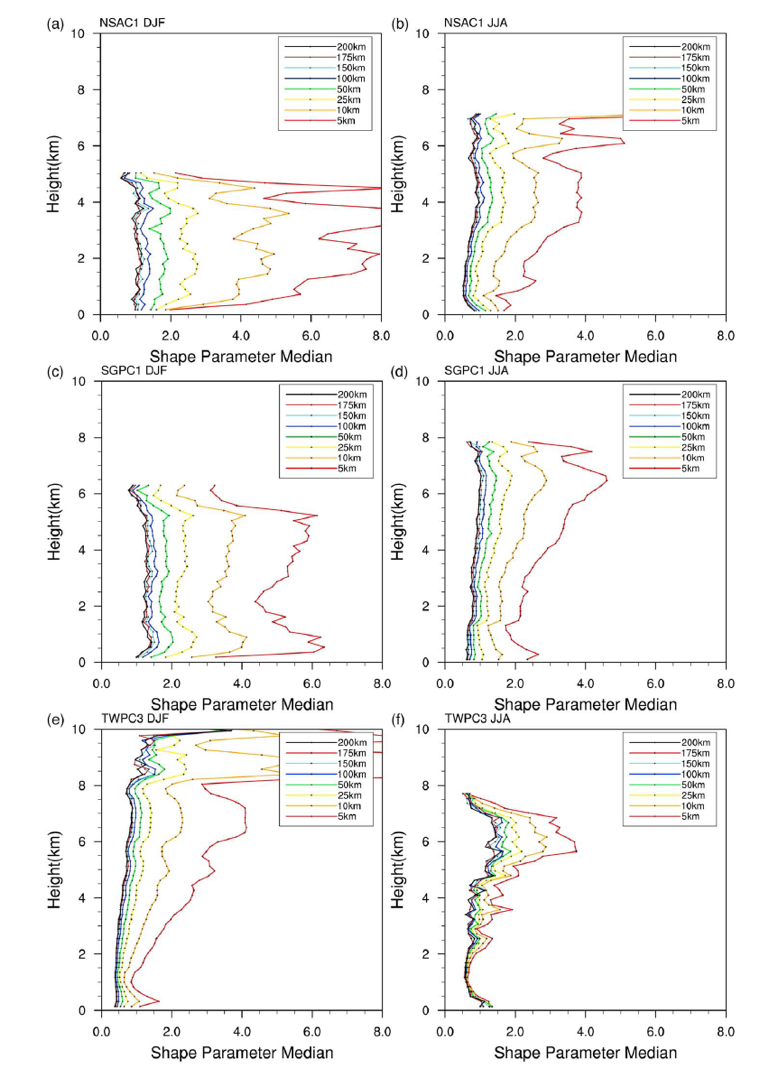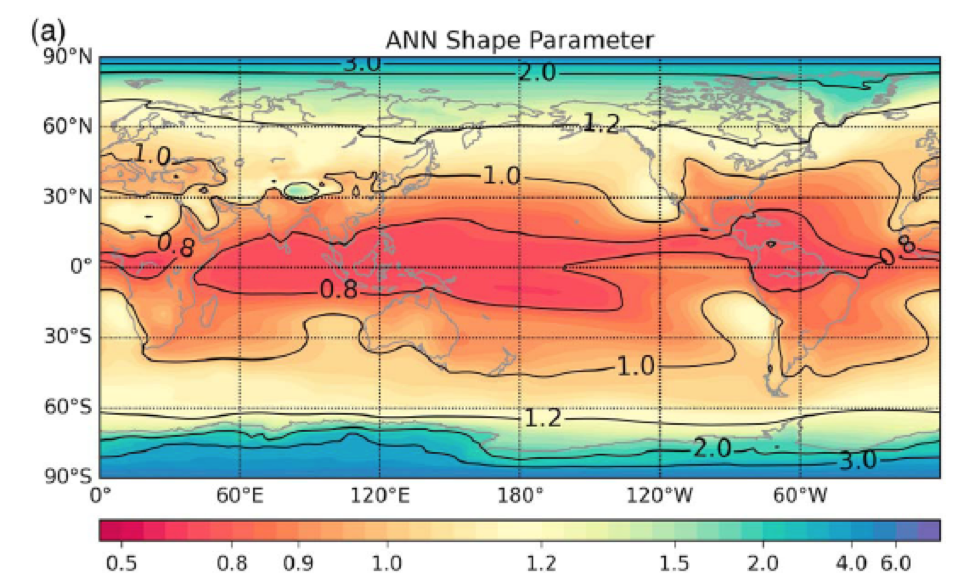Scale‐Aware Parameterization of Liquid Cloud Inhomogeneity and its Impact on Simulated Climate
Submitter:
Zhang, Minghua — Stony Brook University
Area of research:
General Circulation and Single Column Models/Parameterizations
Journal Reference:
Science
The subgrid distribution of cloud liquid water is known to impact radiation and microphysics processes in climate models. Its parameterization usually assumes a fixed parametric distribution such as what was used in the Community Earth System Model (CESM). The parameters often need to be tuned for different resolutions of the model. A more physically based approach is desired.
Impact
Using long-term radar-based ground measurements from the Atmospheric Radiation Measurement (ARM) program, we derived the inhomogeneity parameter of cloud liquid water as represented by the shape parameter of a Gamma distribution. We found a relationship between the inhomogeneity parameter and the model grid size as well as atmospheric conditions. A larger grid scale and more unstable atmosphere are associated with larger inhomogeneity. This relationship is implemented as a scale-aware parameterization of the liquid cloud inhomogeneity in the CESM. Relative to the default CESM with the finite-volume dynamic core at 2-degree resolution, the new parameterization reduces the cloud inhomogeneity in high latitudes and increases it in low latitudes. This is due to both the smaller (larger) grid size in high (low) latitudes in the longitude-latitude grid setting of CESM and the more stable (unstable) atmosphere. The new parameterization leads to increases in the cloud liquid water path in polar regions and decreases in low latitudes.
Summary
A scale-aware parameterization of the subgrid scale inhomogeneity of cloud liquid water was developed for climate models by using ARM data. It has been implemented in CESM.



